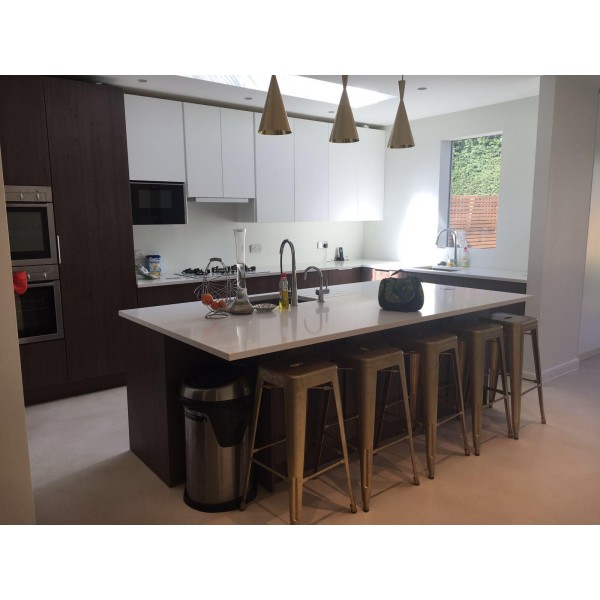Garden Rooms in Altrincham
Welcome to TKO Kitchens & Construction LTD, your go-to experts for all things construction in Peel Green and Gr... read more »
Welcome to Bespoke Installations, your go-to experts for top-notch tradespeople services in Man... read more »
Welcome to MIPA Solutions Ltd, your go-to experts for all your building and refurbishment needs in Sankey Bridges and across Ch... read more »
Welcome to RP Landscapes Ltd, your go-to experts for all landscaping and groundwork needs in Greenbank and across Cheshire. Our team of s... read more »
Renown Building Maintenance Ltd, a distinguished name in the construction industry, proudly serves the vibrant community... read more »
Welcome to BG Gas Ltd, your trusted tradespeople in Charlestown, proudly serving the Greater Manchester area. With over 20 years of exper... read more »
Welcome to DCM, your trusted partner for all things c... read more »
Typar Construction Ltd stands as a b... read more »
Northrop Canton Ltd is your go-to so... read more »
Welcome to The Garden Hub, your go-to experts for all... read more »
Welcome to Gardenshedassembly, your premier choice fo... read more »
T & S Builders are a renowned buildi... read more »
Welcome t... read more »
Kubes Garden Rooms Ltd is a premier... read more »
Welcome to Clydesdale Timber Products Ltd, your go-to... read more »
Welcome to Stop Digging Manchester, your premier grou... read more »
Welcome to TWC Joinery Services, your go-to experts f... read more »
Search Garden Rooms in places nearby
- Garden Rooms in Abram
- Garden Rooms in Ashton-in-Makerfield
- Garden Rooms in Ashton-Under-Lyne
- Garden Rooms in Atherton
- Garden Rooms in Bolton
- Garden Rooms in Bramhall
- Garden Rooms in Buckley
- Garden Rooms in Bury
- Garden Rooms in Chadderton
- Garden Rooms in Cheadle
- Garden Rooms in Cheadle Hulme
- Garden Rooms in Denton
- Garden Rooms in Droylsden
- Garden Rooms in Dukinfield
- Garden Rooms in Eccles
- Garden Rooms in Failsworth
- Garden Rooms in Farnworth
- Garden Rooms in Gatley
- Garden Rooms in Golborne
- Garden Rooms in Hale
- Garden Rooms in Hazel Grove
- Garden Rooms in Heywood
- Garden Rooms in Hindley
- Garden Rooms in Horwich
- Garden Rooms in Hyde
- Garden Rooms in Ince in Makerfield
- Garden Rooms in Irlam
- Garden Rooms in Kearsley
- Garden Rooms in Leigh
- Garden Rooms in Littleborough
- Garden Rooms in Little Lever
- Garden Rooms in Manchester
- Garden Rooms in Marple
- Garden Rooms in Middleton
- Garden Rooms in Milnrow
- Garden Rooms in Mossley
- Garden Rooms in Oldham
- Garden Rooms in Pendlebury
- Garden Rooms in Prestwich
- Garden Rooms in Radcliffe
- Garden Rooms in Ramsbottom
- Garden Rooms in Rochdale
- Garden Rooms in Romiley
- Garden Rooms in Royton
- Garden Rooms in Sale
- Garden Rooms in Salford
- Garden Rooms in Shaw
- Garden Rooms in Stalybridge
- Garden Rooms in Standish
- Garden Rooms in Stockport
- Garden Rooms in Stretford
- Garden Rooms in Swinton
- Garden Rooms in Tyldesley
- Garden Rooms in Urmston
- Garden Rooms in Walkden
- Garden Rooms in Westhoughton
- Garden Rooms in Whitefield
- Garden Rooms in Wigan
- Garden Rooms in Worsley
Introduction to Garden Rooms in Altrincham
Garden rooms in Altrincham have become a popular addition to many homes, offering a versatile space that can be used for a variety of purposes. Whether you're looking to create a home office, a gym, or simply a peaceful retreat, a garden room can provide the perfect solution. In this article, we'll explore the many benefits of garden rooms, the different types available, and how to choose the right one for your needs.
The Benefits of Having a Garden Room
Garden rooms offer numerous advantages that make them an attractive option for homeowners. Firstly, they provide extra space without the need for a costly extension. This additional space can be used for a multitude of purposes, from a quiet reading nook to a lively entertainment area. Moreover, garden rooms can enhance the aesthetic appeal of your garden, adding a touch of elegance and sophistication.
Another significant benefit is the potential increase in property value. A well-designed garden room can make your home more appealing to potential buyers, offering them additional living space that is both functional and stylish. Furthermore, garden rooms are typically more energy-efficient than traditional extensions, thanks to modern insulation techniques and materials.
Creating a Personal Sanctuary
One of the most appealing aspects of a garden room is the opportunity to create a personal sanctuary. Away from the hustle and bustle of the main house, a garden room can serve as a peaceful retreat where you can unwind and relax. Whether you choose to fill it with books, art supplies, or yoga mats, the possibilities are endless.
Flexible and Multi-Functional Spaces
Garden rooms are incredibly versatile, allowing you to adapt the space to suit your changing needs. Today, it might be a home office, but in the future, it could become a playroom or a guest bedroom. This flexibility makes garden rooms a smart investment for any homeowner.
Types of Garden Rooms Available
When it comes to garden rooms, there are several types to choose from, each offering unique features and benefits. Understanding the differences can help you make an informed decision that meets your specific requirements.
Traditional Garden Rooms
Traditional garden rooms are often constructed using classic materials such as wood and brick. These rooms blend seamlessly with the natural surroundings, offering a timeless aesthetic that complements any garden. They are typically designed to mimic the style of the main house, ensuring a cohesive look throughout the property.
Contemporary Garden Rooms
For those who prefer a modern look, contemporary garden rooms are an excellent choice. These structures often feature sleek lines, large windows, and minimalist designs. They are built using modern materials such as glass and steel, which not only look stylish but also provide excellent insulation and durability.
Eco-Friendly Garden Rooms
Eco-friendly garden rooms are becoming increasingly popular as more homeowners seek sustainable living solutions. These rooms are constructed using environmentally friendly materials and techniques, such as recycled wood and solar panels. They are designed to minimise energy consumption and reduce your carbon footprint.
Choosing the Right Garden Room for Your Needs
Selecting the right garden room involves considering several factors, including your budget, the available space, and your intended use for the room. Here are some tips to help you make the right choice.
Assessing Your Space
Before you start shopping for a garden room, it's essential to assess the available space in your garden. Consider the size and shape of your garden, as well as any existing features such as trees or flower beds. This will help you determine the best location for your garden room and ensure it fits seamlessly into your outdoor space.
Setting a Budget
Garden rooms can vary significantly in price, depending on the size, materials, and features you choose. Setting a budget early on will help you narrow down your options and avoid overspending. Remember to factor in additional costs such as installation, permits, and landscaping.
Determining the Purpose
Think about how you plan to use your garden room. Will it be a home office, a gym, or a guest bedroom? Knowing the primary purpose of the room will help you choose the right design and features. For example, if you plan to use it as a home office, you'll need plenty of natural light and electrical outlets.
Designing Your Garden Room
Once you've chosen the type of garden room that suits your needs, it's time to think about the design. This includes everything from the layout and materials to the colour scheme and furnishings.
Layout and Functionality
The layout of your garden room should be designed with functionality in mind. Consider the flow of the space and how you will move around it. For example, if you're creating a home office, you'll need a desk, chair, and storage space. If it's a gym, you'll need room for exercise equipment and mats.
Choosing Materials
The materials you choose for your garden room will have a significant impact on its appearance and durability. Wood is a popular choice for its natural beauty and warmth, while glass and steel offer a modern, sleek look. Consider the climate in Altrincham and choose materials that will withstand the weather conditions.
Colour Scheme and Furnishings
The colour scheme and furnishings you choose will set the tone for your garden room. Neutral colours such as white, beige, and grey create a calm and relaxing atmosphere, while bold colours can add energy and vibrancy. Choose furnishings that complement the style of the room and provide comfort and functionality.
Building Regulations and Planning Permission
Before you start building your garden room, it's essential to understand the building regulations and planning permission requirements in Altrincham. This will ensure your project complies with local laws and avoids any potential issues.
Understanding Building Regulations
Building regulations are designed to ensure the safety and quality of construction projects. In Altrincham, garden rooms must comply with specific regulations regarding structural integrity, insulation, and fire safety. It's essential to work with a qualified contractor who understands these requirements and can ensure your garden room meets all necessary standards.
Planning Permission Requirements
In some cases, you may need planning permission to build a garden room in Altrincham. This typically depends on the size and location of the room, as well as any potential impact on neighbouring properties. It's a good idea to consult with your local planning authority to determine if permission is required for your project.
Hiring a Professional for Your Garden Room Project
While some homeowners may choose to tackle a garden room project themselves, hiring a professional can save time, money, and stress. A qualified contractor will have the experience and expertise to ensure your garden room is built to the highest standards.
Finding the Right Contractor
When choosing a contractor for your garden room project, it's essential to do your research. Look for a company with a solid reputation and positive reviews from previous clients. Ask for references and examples of their work to ensure they have the skills and experience needed for your project.
Working with Your Contractor
Once you've chosen a contractor, it's important to establish clear communication and expectations. Discuss your vision for the garden room, including the design, materials, and budget. Regular check-ins and updates will help ensure the project stays on track and meets your expectations.
Maintaining Your Garden Room
Proper maintenance is essential to keep your garden room looking its best and functioning efficiently. Regular upkeep will also help extend the lifespan of the room and protect your investment.
Cleaning and Upkeep
Regular cleaning is crucial to maintaining the appearance of your garden room. Dust and dirt can accumulate on surfaces, while leaves and debris can collect around the exterior. A thorough cleaning every few months will help keep your garden room looking fresh and inviting.
Inspecting for Damage
It's important to inspect your garden room regularly for any signs of damage or wear. Check for issues such as leaks, cracks, or rot, and address them promptly to prevent further damage. Regular inspections will help you catch potential problems early and avoid costly repairs.
Seasonal Maintenance
Seasonal maintenance is essential to prepare your garden room for changing weather conditions. In the winter, ensure the room is well-insulated and protected from the cold. In the summer, check for any issues with ventilation and cooling to keep the space comfortable.
Frequently Asked Questions
- What is the average cost of a garden room in Altrincham? The cost of a garden room can vary widely depending on the size, materials, and features. On average, you can expect to pay between £10,000 and £30,000.
- Do I need planning permission for a garden room in Altrincham? Planning permission may be required depending on the size and location of the garden room. It's best to consult with your local planning authority to determine if permission is needed.
- How long does it take to build a garden room? The construction time for a garden room can vary depending on the complexity of the project. On average, it takes between 4 to 8 weeks to complete.
- Can a garden room be used year-round? Yes, with proper insulation and heating, a garden room can be used throughout the year.
- What materials are best for a garden room? The best materials for a garden room depend on your preferences and the local climate. Wood, glass, and steel are popular choices for their durability and aesthetic appeal.
- How can I make my garden room more energy-efficient? To improve energy efficiency, consider using high-quality insulation, double-glazed windows, and energy-efficient heating and cooling systems.
Send a message












